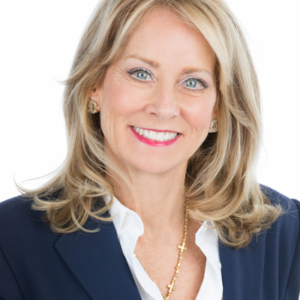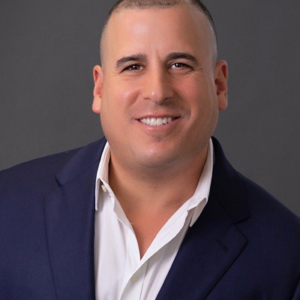The South Florida economy is improving, with employers increasing payroll across a range of industries and the unemployment rate decreasing to 4.7% in Palm Beach County, 5.3% in Broward, and 6.9% in Miami-Dade, less than half of the level one year ago, according to the U.S. Bureau of Labor Statistics. The rebound in domestic tourism, combined with some recovery of international travel, also added to economic growth.
At the same time, there is a lack of real estate inventory for home sales and rentals which is driving the prices up for all price ranges from affordable to luxury homes. With an economic recovery and increased demand, prices are soaring.
Luxury is Winning

Linda Olsson of Linda R. Olsson Inc.
“The luxury market is on fire!” said Linda Olsson, founder of Linda R. Olsson from her office in the Town of Palm Beach. “Of the 34 homes currently for sale in town, 17 are over $16.5 million. ten are under $10 million. All have major price increases in the last year. One property that was $3.4 million a year ago, sold this season for $6.9 million.”
The buyers in town are mostly relocations from New York, New Jersey and Connecticut. Even some from California. See Olsson’s Q1 Market Report for the Town of Palm Beach.
“Across the area, new younger families are making their lives here,” said Olsson, whose agents sell homes from Martin County to south Palm Beach County. “They’re looking for homes with lots of space and pools, they have cash, there just isn’t enough inventory to sell.”
For the luxury market, South Florida reports from Douglas Elliman showed that Palm Beach County saw the largest leap in prices in January 2021, with 338 contracts signed on all types of luxury homes asking above $3 million, compared to 134 at the same time last year: a 152% jump.
Miami-Dade County in another report from the brokerage shows a 150% increase in high-end contracts, going from 387 in May, 2020 to 967 this May. And in Broward County, the number of big dollar contracts swelled 56.4%.
For single-family homes priced over $10 million, there were more contracts in Miami-Dade County where 276 changed hands last month, a jump of 187.5% and a greater increase than any other price segment within the county’s house market.
Condos logged the most noteworthy recovery in Broward County. There were 32 contracts signed on condo units priced above $5 million, a 433.3% surge from the six that changed hands in May last year.
The out-of-town buyers are causing a squeeze between high earners and all the rest. As state taxes and the pandemic encourage the upper-middle class and wealthy to relocate from other states to South Florida, the demand and limited inventory are driving up prices.
Are Rental Contracts the Answer?
The housing shortage is causing rents to rise too so there’s a lack of affordable rentals. Residents that think renting a home is an affordable alternative to buying in South Florida’s white-hot real estate market, they might be in for a shock. South Florida saw the greatest percentage increase in rental prices in the nation in the six months leading up to February 2021, according to a report published by Insurify.
Florida dominated the list with seven of the top 20 cities, four in Palm Beach County.
- Palm Beach Gardens is first in the nation with the largest increase, 10.55%, for an average monthly rent of $2,158.
- Wellington is third in the nation with an 8.28% increase but first on the national list for average monthly cost: $2,262.
- Boca Raton had a 6.85% increase with an average rent of $2,074.
- Delray Beach had a 5.63% increase and an average rent of $1,858.
“In Wellington, agents are running in circles,” said Leslie Torino, a Realtor with Realty Home Advisors that works both the rental and purchase market. “There’s no inventory to buy and rentals are scarce and higher priced too. Many clients have moved from up north, sold their place up there and bring lots of cash to buy or rent. They can afford elevated local prices because it’s lower than where they came from. They’ve priced everyone else out of this market. I’m a people person so my network helps me stay just a step out in front of the market.”
Agents: Be Ready to Pivot
ONE Sotheby’s International Realty just released their Realty Market Report that reflects buyer demand across Florida’s East Coast. A report headline: One in four homes is selling above the asking price. ONE Sotheby’s uses market data from the MLS, business and government sources to produce their report.

Seth Kaufman, Chief Sales Officer with ONE Sotheby’s International Realty
“The ability to secure listings will become more and more competitive as inventory continues to tighten,” said Seth Kaufman, chief sales officer with ONE Sotheby’s International Realty. “Having strong experience, reputation, listing presentation and reputable company backing will give agents an edge over their competition. While the competition to secure listings has and will continue to increase, there will still be plenty of opportunities to get listings because sellers are seeing the market data, seeing their equity increase and want to capitalize on the opportunity. This data allows agents to have more accurate, transparent and honest conversations with their clients.”
The name of the game is find the sellers and landlords.
ONE Sotheby’s International Realty Market Report Highlights
- The elevated competition for homes translated to multiple offers and quick sales for many sellers. For condos and homes sold in May, listings remained on the market for 64 days, the shortest period since at least 2015. Additionally, roughly 24% of homes sold for more than the asking price, the highest such share also since at least 2015. The percentage of single-family homes selling about the asking price:
- Broward: 38%
- Palm Beach: 33%
- Miami-Dade: 29%
- Low inventory remained one of the primary constraints on the housing market. Roughly 22,000 single-family homes and condos were available for sale at the end of May, a decrease of nearly 8% from April. From the end of 2020, for-sale inventory decreased by approximately 43%. While recent pricing gains have prompted some existing owners to list homes for sale, pent-up demand for housing absorbed this new supply quickly.
- While demand for all types of homes remained strong, condo sales volume outpaced single-family homes in part due to a greater availability of units for sale as well as lower price points in many neighborhoods. Similarly, while average pricing for condo units in the region increased by nearly 4%, the average price for single-family homes decreased slightly
- Buyer demand will continue to outpace supply, leading to gains in pricing throughout much of the region. The heightened competition, particularly for higher quality homes, will continue to drive the average days on market lower and the share of homes sold at greater than asking price will remain elevated.
- As economic conditions improve throughout the country, tourism volume should recover, and migration trends shift towards pre-pandemic levels. In addition, international visitor levels will improve as borders reopen. This will lead to a revival in foreign purchase activity, particularly from European buyers in the near term and, once conditions improve, from Central and South America.
“Agents are shifting marketing dollars towards the condo market as that sector heats up,” said Kaufman. “For the past year or so the focus has been on domestic buyers due to the influx of demand from the Northeast and West Coast. Now, agents are also more focused on the international buyer and those relationships due to currency valuations/devaluations. As countries continue to open their borders, we will see an increase in purchases from outside the U.S. as a result of the pent-up demand, especially from countries facing economic uncertainty and increased health concerns.”

